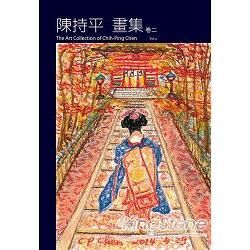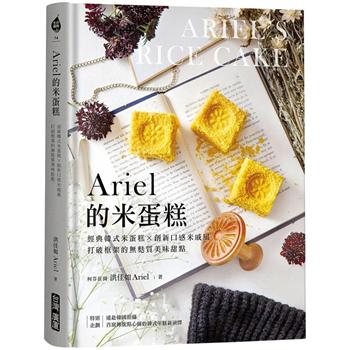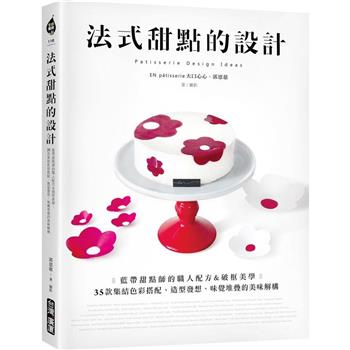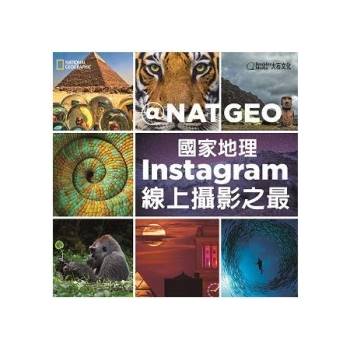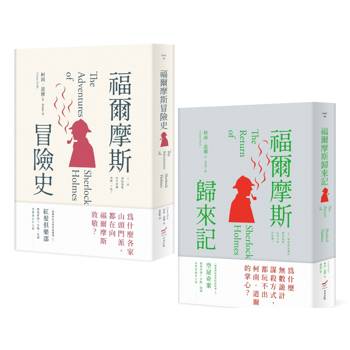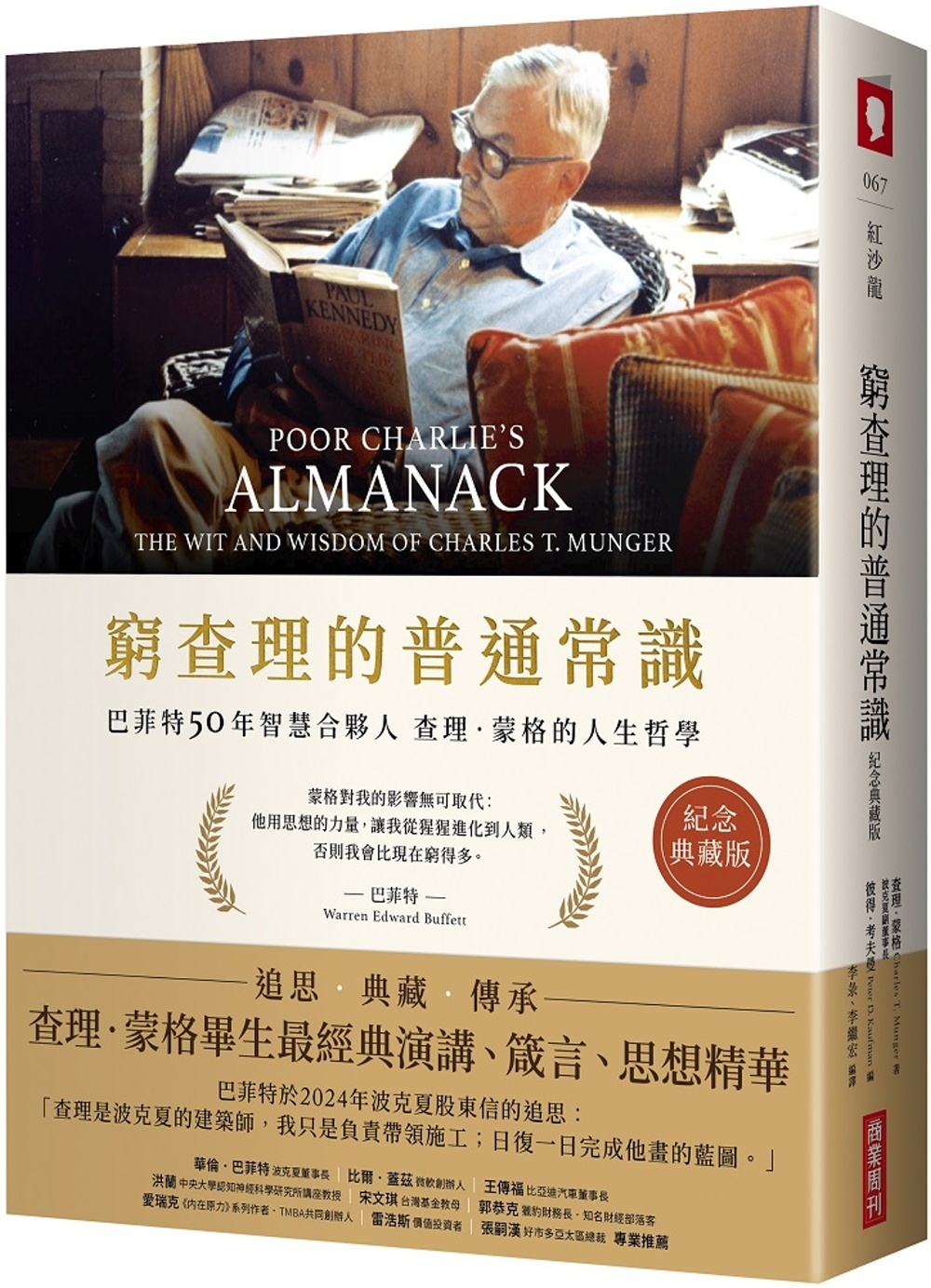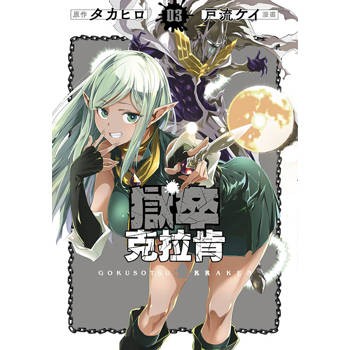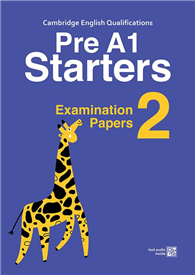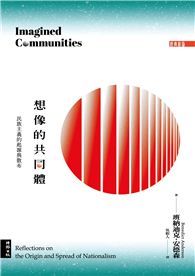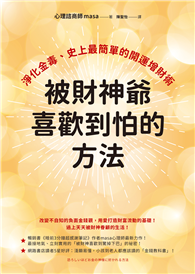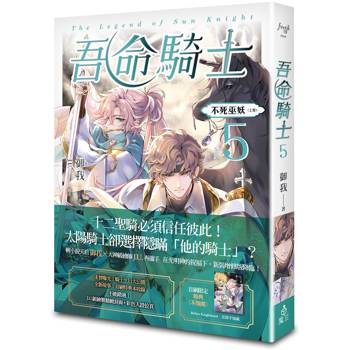陳持平畫冊收錄了百大名醫陳持平醫師自2013年開始,拾起蠟筆每日一畫的作品,共計157張畫作,內容包羅萬象,畫風簡單而富含童趣。
陳持平醫師擅長用色彩鮮豔的蠟筆,將他日常生活觀察一一畫下,成為風格獨一無二的獨特作品。身為台灣知名的婦產科醫師,陳持平在忙碌的行醫生涯中,每天抽出一小時,在畫紙上揮灑自己源源不絕的創作靈感。迄今,他一日一畫的計畫仍未中斷,目前已累積近兩百張的作品。他的畫冊以「時間序列」作為彙編準則,讀者可看見他剛開始投入繪畫領域的青澀與生疏,一直到近期在構圖用色上有足長的進步。
閱讀陳持平的畫集,能感受到名醫掩藏在白袍下的,那顆對大地萬物、對愛與人生最真摯關懷的心。
| FindBook |
有 5 項符合
陳持平畫集 卷二的圖書 |
| 圖書館借閱 |
| 國家圖書館 | 全國圖書書目資訊網 | 國立公共資訊圖書館 | 電子書服務平台 | MetaCat 跨館整合查詢 |
| 臺北市立圖書館 | 新北市立圖書館 | 基隆市公共圖書館 | 桃園市立圖書館 | 新竹縣公共圖書館 |
| 苗栗縣立圖書館 | 臺中市立圖書館 | 彰化縣公共圖書館 | 南投縣文化局 | 雲林縣公共圖書館 |
| 嘉義縣圖書館 | 臺南市立圖書館 | 高雄市立圖書館 | 屏東縣公共圖書館 | 宜蘭縣公共圖書館 |
| 花蓮縣文化局 | 臺東縣文化處 |
|
|
圖書介紹 - 資料來源:博客來 評分:
圖書名稱:陳持平畫集 卷二
內容簡介
作者介紹
作者、繪者簡介
陳持平
白袍下的感性靈魂
陳持平,行醫將近四十個年頭,是台灣知名的婦產科醫師,名列百大名醫之一,也是產前遺傳診斷的巨擘。一身白袍,一臉自信的笑容,給人的第一印象,就是他那固執追求完美的個性,無論在臨床上、教學上,都一絲不苟、認真以對。在醫界已然站穩地位的陳持平醫師,在將近耳順之年,突然拾起他此生從未接觸過的───畫筆,在二〇一三年的聖誕節前夕,開始每天一畫的「創作淬鍊之旅」。而從他拾起畫筆的那天開始,從無間斷,無論醫師工作有多忙碌、繁重,他仍利用閒暇時間,持續而堅持地,用畫筆豐富身心靈。
素人畫家陳持平醫師所選擇的畫具,不是水墨,不是油彩,而是最原始、最基本的蠟筆。「蠟筆,大概是孩子人生中第一個接觸的畫具,不管是畫在紙上,還是畫在牆上,蠟筆都成為孩子『傳達豐富靈感及想像力』的媒介,而陪伴孩子成長的蠟筆,也是無毒環保的畫具,適合人人使用。」
陳持平從不輕視這「好像沒什麼難度」的畫具,相反的,他很享受並善用這信手捻來、隨時可畫的趣味。他能在閱讀書報雜誌、攝影及旅遊叢書時擷取靈感,也可以在街頭巷尾看見某個場景,立刻在心裡勾勒出初稿;也可以將心中對宗教、生命的熱愛,活靈活現地躍於紙上……一盒蠟筆,一張隨手取得的A4圖畫紙,就開始了陳持平的「快意人生」。
繪畫帶給陳持平的不只是創作的成就感、釋放壓力的愉悅感,更拉近了親子關係,將想與孩子分享的心情,幻化為張張色彩鮮明、構圖生動的作品。陳持平感性地說,兩個優秀的女兒繼承父母衣缽,讓他覺得驕傲滿足,但日以繼夜的醫師工作,使他和孩子聚少離多,沒能陪孩子一起成長,始終是心裡的遺憾。陳持平拿出女兒去年送給他的聖誕驚喜----將他的畫彙編成冊。「我想女兒們明白,爸爸留給孩子最珍貴的資產,不是財富權勢,而是這一張張獨一無二、絕無僅有的畫作,這等於是爸爸的靈魂、爸爸的生命軌跡,也是我最想傳達給孩子的真心。」
如今因為畫,陳持平和孩子們有了溝通話題;因為畫,他與家人朋友有了交流管道;因為畫,他結交了不同領域的朋友……簡單的蠟筆,卻能帶給陳持平深刻綿長的感動,甚至改變了生活。
陳持平感性地說,繪畫是促進心靈健康的仙丹妙藥,自己雖是素人畫家,但他希望以自己為例,鼓勵大家用畫作紓解壓力、用畫作關懷社會、用畫作觀察世界……
對陳持平醫師而言,畫,是藝術,更是人生的縮影。他將持續創作,用這單純而美好的童稚之心,領略世界的美。
Sketch of the Artist
The Artistic Soul in a White Coat
Chih-Ping Chen, a distinguished Taiwanese obstetrician-gynecologist who has practiced medicine for nearly four decades, is not only selected as one of the 100 best doctors in Taiwan, but also recognized as the master of prenatal genetic diagnosis. Wearing a white coat and a confident smile, Chen always gives a first impression of earnestness and meticulousness in pursuing perfection both in clinical and teaching practice.
Despite his prestige in the medical world and his age of nearly 60, Chen started a hobby that he had never tried before—painting. On the Christmas Eve of 2013, he embarked on an adventure of creativity and artistry, and has since drawn pictures every single day in his leisure time, despite his demanding and busy hospital job.
As an amateur painter, Chen did not choose popular materials such as ink or oil paint, but something more primitive and basic—crayons. “Crayons are probably the first painting tool every little kid starts with.
Whether they are used on paper or on a wall, crayons have become a medium through which kids show their creativity and ingenuity, as well as a great companion during kids’ childhood. They are also a non-toxic and eco-friendly painting tool for everyone,” said Chen.
Chen has never taken lightly this seemingly easy tool, but truly enjoyed and fully utilized his crayons as an access to spontaneous and serendipitous fun of painting. He would get ideas while reading newspapers, magazines or books related to photography and tourism. He would sketch any interesting scene in any given corner in the city. He would also demonstrate his religious belief and his love for life on paper. With a box of crayons and a sheet of A4-size drawing paper, Chen gets as much fun as he can, at any moment.
Crayon painting has not only given Chen a sense of achievement and pleasure that relieve his daily stress, but has also brought him and his daughters closer, as he shares his thoughts and feelings through one after another colorful and vivid pictures. Chen is proud of his two daughters, who are also medical doctors, but there have always been some regret that he has not been able to accompany them throughout much of their childhood, due to his busy job. During the interview, Chen took out the Christmas surprise his two daughters gave him—a compiled album of his crayon works. “I think they realized that the best treasure their father could leave them is not wealth nor power, but these paintings that are uniquely drawn by him. These works have reflected my inner self, recorded my life, and represented my love for my children,” said Chen.
Thanks to these paintings, Chen has a lot more to talk about with his daughters, and his communication with his family and friends became more frequent, and he even made friends with people in various fields other than medicine. Something as simple as crayons has given Chen a truly different life and numerous unforgettable moments.
As Chen reflected, painting is a great access to a healthy mind, and his experience as an amateur painter could well serve as a case that would encourage more people to ease their daily stress, care about the society, and see the world through painting.
For Dr. Chen, a painting is a piece of art, as well as an epitome of a person’s life. He will continue to create his unique artworks and to appreciate the beauty of this world in his eyes, with a pure and innocent heart.
陳持平
白袍下的感性靈魂
陳持平,行醫將近四十個年頭,是台灣知名的婦產科醫師,名列百大名醫之一,也是產前遺傳診斷的巨擘。一身白袍,一臉自信的笑容,給人的第一印象,就是他那固執追求完美的個性,無論在臨床上、教學上,都一絲不苟、認真以對。在醫界已然站穩地位的陳持平醫師,在將近耳順之年,突然拾起他此生從未接觸過的───畫筆,在二〇一三年的聖誕節前夕,開始每天一畫的「創作淬鍊之旅」。而從他拾起畫筆的那天開始,從無間斷,無論醫師工作有多忙碌、繁重,他仍利用閒暇時間,持續而堅持地,用畫筆豐富身心靈。
素人畫家陳持平醫師所選擇的畫具,不是水墨,不是油彩,而是最原始、最基本的蠟筆。「蠟筆,大概是孩子人生中第一個接觸的畫具,不管是畫在紙上,還是畫在牆上,蠟筆都成為孩子『傳達豐富靈感及想像力』的媒介,而陪伴孩子成長的蠟筆,也是無毒環保的畫具,適合人人使用。」
陳持平從不輕視這「好像沒什麼難度」的畫具,相反的,他很享受並善用這信手捻來、隨時可畫的趣味。他能在閱讀書報雜誌、攝影及旅遊叢書時擷取靈感,也可以在街頭巷尾看見某個場景,立刻在心裡勾勒出初稿;也可以將心中對宗教、生命的熱愛,活靈活現地躍於紙上……一盒蠟筆,一張隨手取得的A4圖畫紙,就開始了陳持平的「快意人生」。
繪畫帶給陳持平的不只是創作的成就感、釋放壓力的愉悅感,更拉近了親子關係,將想與孩子分享的心情,幻化為張張色彩鮮明、構圖生動的作品。陳持平感性地說,兩個優秀的女兒繼承父母衣缽,讓他覺得驕傲滿足,但日以繼夜的醫師工作,使他和孩子聚少離多,沒能陪孩子一起成長,始終是心裡的遺憾。陳持平拿出女兒去年送給他的聖誕驚喜----將他的畫彙編成冊。「我想女兒們明白,爸爸留給孩子最珍貴的資產,不是財富權勢,而是這一張張獨一無二、絕無僅有的畫作,這等於是爸爸的靈魂、爸爸的生命軌跡,也是我最想傳達給孩子的真心。」
如今因為畫,陳持平和孩子們有了溝通話題;因為畫,他與家人朋友有了交流管道;因為畫,他結交了不同領域的朋友……簡單的蠟筆,卻能帶給陳持平深刻綿長的感動,甚至改變了生活。
陳持平感性地說,繪畫是促進心靈健康的仙丹妙藥,自己雖是素人畫家,但他希望以自己為例,鼓勵大家用畫作紓解壓力、用畫作關懷社會、用畫作觀察世界……
對陳持平醫師而言,畫,是藝術,更是人生的縮影。他將持續創作,用這單純而美好的童稚之心,領略世界的美。
Sketch of the Artist
The Artistic Soul in a White Coat
Chih-Ping Chen, a distinguished Taiwanese obstetrician-gynecologist who has practiced medicine for nearly four decades, is not only selected as one of the 100 best doctors in Taiwan, but also recognized as the master of prenatal genetic diagnosis. Wearing a white coat and a confident smile, Chen always gives a first impression of earnestness and meticulousness in pursuing perfection both in clinical and teaching practice.
Despite his prestige in the medical world and his age of nearly 60, Chen started a hobby that he had never tried before—painting. On the Christmas Eve of 2013, he embarked on an adventure of creativity and artistry, and has since drawn pictures every single day in his leisure time, despite his demanding and busy hospital job.
As an amateur painter, Chen did not choose popular materials such as ink or oil paint, but something more primitive and basic—crayons. “Crayons are probably the first painting tool every little kid starts with.
Whether they are used on paper or on a wall, crayons have become a medium through which kids show their creativity and ingenuity, as well as a great companion during kids’ childhood. They are also a non-toxic and eco-friendly painting tool for everyone,” said Chen.
Chen has never taken lightly this seemingly easy tool, but truly enjoyed and fully utilized his crayons as an access to spontaneous and serendipitous fun of painting. He would get ideas while reading newspapers, magazines or books related to photography and tourism. He would sketch any interesting scene in any given corner in the city. He would also demonstrate his religious belief and his love for life on paper. With a box of crayons and a sheet of A4-size drawing paper, Chen gets as much fun as he can, at any moment.
Crayon painting has not only given Chen a sense of achievement and pleasure that relieve his daily stress, but has also brought him and his daughters closer, as he shares his thoughts and feelings through one after another colorful and vivid pictures. Chen is proud of his two daughters, who are also medical doctors, but there have always been some regret that he has not been able to accompany them throughout much of their childhood, due to his busy job. During the interview, Chen took out the Christmas surprise his two daughters gave him—a compiled album of his crayon works. “I think they realized that the best treasure their father could leave them is not wealth nor power, but these paintings that are uniquely drawn by him. These works have reflected my inner self, recorded my life, and represented my love for my children,” said Chen.
Thanks to these paintings, Chen has a lot more to talk about with his daughters, and his communication with his family and friends became more frequent, and he even made friends with people in various fields other than medicine. Something as simple as crayons has given Chen a truly different life and numerous unforgettable moments.
As Chen reflected, painting is a great access to a healthy mind, and his experience as an amateur painter could well serve as a case that would encourage more people to ease their daily stress, care about the society, and see the world through painting.
For Dr. Chen, a painting is a piece of art, as well as an epitome of a person’s life. He will continue to create his unique artworks and to appreciate the beauty of this world in his eyes, with a pure and innocent heart.
序
序
陳孝恬
I once learned that Pablo Picasso had many stages in his artistic career: the Blue period, the Rose period, the Cubism period and so on. I suppose all creative people go through phases in their lives. My dad had some of his own stages, including the Fish Tank period, the Broadway period, and now, the Artistic period. Whoever believes that we should live life in moderation obviously does not know my dad, because his whirlwind adventures continues to sweep me along…and I love it.
據我所知,畢卡索的藝術生涯分成許多階段,像是藍色時期、玫瑰時期、立體派時期等等。我想凡是有創造力的人一生都會經歷不同的階段,老爸的人生也是如此,例如魚缸時期、百老匯時期、還有現在的藝術時期。那些認為人生平淡才是福的人顯然不了解我老爸,他天馬行空般的精彩人生不斷帶給我驚喜,令我深深樂在其中。
I remember pressing my nose against the cool glass pane as blurs of colors scattered in response. I remember the lingering smell of seaweed. Ah yes, the Fish Tank era, the time when my dad painstakingly read all the manuals on fish tank maintenance. I would help him go through books on the optimum temperatures and pH levels and how to raise proper-looking sea-grass (the secret is in the amount of light). My favorite thing however, was having him introduce each and every fish to me. “Where’s this little one from? What’s it called?” I would point to one of the tanks with my chubby finger. “That’s a gorgeous one from the tropics. It’s called an Angelfish.” I would nod and move on to the next tank. This name game would last for a while because we had eight tanks in total during the pinnacle of the Fish Tank era.
我還記得我把鼻子緊貼著冰涼的玻璃缸,看著五顏六色在眼前模糊地晃動,一股水草味如今依稀猶存。沒錯,那正是老爸的魚缸時期。那時候他不厭其煩地研讀如何保養魚缸的說明書,我也會幫他翻書查資料,看看如何維持適當的水溫和酸鹼值,還有如何把水草養得好看(秘訣在於光照量)。但我最喜歡的部分是他教我認識每條魚的時候。我總會用我胖胖的手指指著魚缸問:「這隻小的是從哪兒來的?牠叫什麼魚?」老爸就會回答:「這是隻很漂亮的熱帶魚,牠叫『神仙魚』。」然後我就會點點頭,繼續看下一個魚缸裡的魚。這個認魚的遊戲會花上好一會兒時間,因為在老爸魚缸時期的全盛時期,我們家最多有八個魚缸。
His adventures soon segued into the Broadway period, in which “Memory” from Cats became my morning wake-up call and weekends became reserved for Broadway films. There were some that I loved, some that I gawked at, think La Cage aux Folles, but all that introduced me to new places and people and storylines. My two all-time favorites, Cats and Phantom of the Opera, led me to practice singing and playing their hits. Perhaps I could never pass off as a true Jellicle Cat or have a deep baritone voice like that of the Phantom when singing “Past the Point of No Return”, but that didn’t matter. I would experiment with different combinations with my sister and my dad would sit on the side, with crinkled eyes and a smile, clapping his hands wildly and singing along. At the end of it all, he would suggest a piece for next time or a new show.
不久之後,他的人生進入到百老匯時期。那時候我每天早上的起床號就是音樂劇「貓」的主題曲「回憶」(Memory),每個週末全家都會去看百老匯歌劇。有些劇我很愛,有些劇我不太敢恭維,好比說「一籠傻鳥」(La Cage aux Folles),但無論如何,這些劇都讓我認識新的人、地、物和故事。我這輩子最喜歡的兩部劇是「貓」和「歌劇魅影」,它們讓我開始練習唱和彈奏其中一些膾炙人口的曲子。儘管我大概永遠無法唱得像「傑利可貓」(Jellicle Cat)那麼好,也沒辦法用渾厚的男中音唱「歌劇魅影」裡的「無路可退」(Past the Point of No Return),但那些都不重要。每當我跟姊姊嘗試不同的合聲,老爸總是坐在一旁笑瞇瞇地,大聲拍著手跟我們一起唱,唱完的時候,他就會提議下次再唱另一首歌或是去看別齣劇。
Recently, my dad turned his attention to creating beautiful art pieces that capture his diverse interests and curiosity in life. The subjects of his crayon paintings range from animals to portraits to religious scenes, which offer a glimpse into my dad’s colorful and vivacious life. My dad stated in his last art collection that the best treasure he could leave my sister and me is not wealth nor power, but these paintings that represent his love for us. There are more treasures that he has given us: the ability to appreciate life’s beauty, the spirit of exploration and the thirst for knowledge. Without a doubt, my dad has taught us how to live life with our eyes, arms and heart wide open through the way he lives his life. In these pages, there are more than exquisite strokes of color; there is an entire lifetime of wonderment and rumination. What more can I say? I am thankful for the journeys I’ve been on, and I look forward to more adventures with my dad.
最近,爸爸的心思轉到了繪畫創作上頭,把他人生中的各種興味用畫表達出來。他的蠟筆畫主題廣泛,從動物、人像到宗教,處處可以窺見他多采多姿、朝氣蓬勃的人生。爸爸在上次畫展時說過,他能留給我和姊姊最珍貴的資產,不是財富權勢,而是這一張張充滿了愛的畫作。其實,他給我們的東西還不只如此,還有審美能力、心靈探索、以及求知慾望。毋庸置疑,爸爸教我們睜大眼睛去看世界、張開雙臂去擁抱世界、敞開心胸去感受世界,就如他面對人生的方式一樣。他的畫作不僅僅是一筆一畫的色彩堆疊,更蘊含了他一生的精彩時刻和心靈沈思,這些即使用千言萬語也不足以形容。我感謝他帶我走過的旅程,也期待繼續跟他一起體驗更多的驚奇人生。
陳孝恬
I once learned that Pablo Picasso had many stages in his artistic career: the Blue period, the Rose period, the Cubism period and so on. I suppose all creative people go through phases in their lives. My dad had some of his own stages, including the Fish Tank period, the Broadway period, and now, the Artistic period. Whoever believes that we should live life in moderation obviously does not know my dad, because his whirlwind adventures continues to sweep me along…and I love it.
據我所知,畢卡索的藝術生涯分成許多階段,像是藍色時期、玫瑰時期、立體派時期等等。我想凡是有創造力的人一生都會經歷不同的階段,老爸的人生也是如此,例如魚缸時期、百老匯時期、還有現在的藝術時期。那些認為人生平淡才是福的人顯然不了解我老爸,他天馬行空般的精彩人生不斷帶給我驚喜,令我深深樂在其中。
I remember pressing my nose against the cool glass pane as blurs of colors scattered in response. I remember the lingering smell of seaweed. Ah yes, the Fish Tank era, the time when my dad painstakingly read all the manuals on fish tank maintenance. I would help him go through books on the optimum temperatures and pH levels and how to raise proper-looking sea-grass (the secret is in the amount of light). My favorite thing however, was having him introduce each and every fish to me. “Where’s this little one from? What’s it called?” I would point to one of the tanks with my chubby finger. “That’s a gorgeous one from the tropics. It’s called an Angelfish.” I would nod and move on to the next tank. This name game would last for a while because we had eight tanks in total during the pinnacle of the Fish Tank era.
我還記得我把鼻子緊貼著冰涼的玻璃缸,看著五顏六色在眼前模糊地晃動,一股水草味如今依稀猶存。沒錯,那正是老爸的魚缸時期。那時候他不厭其煩地研讀如何保養魚缸的說明書,我也會幫他翻書查資料,看看如何維持適當的水溫和酸鹼值,還有如何把水草養得好看(秘訣在於光照量)。但我最喜歡的部分是他教我認識每條魚的時候。我總會用我胖胖的手指指著魚缸問:「這隻小的是從哪兒來的?牠叫什麼魚?」老爸就會回答:「這是隻很漂亮的熱帶魚,牠叫『神仙魚』。」然後我就會點點頭,繼續看下一個魚缸裡的魚。這個認魚的遊戲會花上好一會兒時間,因為在老爸魚缸時期的全盛時期,我們家最多有八個魚缸。
His adventures soon segued into the Broadway period, in which “Memory” from Cats became my morning wake-up call and weekends became reserved for Broadway films. There were some that I loved, some that I gawked at, think La Cage aux Folles, but all that introduced me to new places and people and storylines. My two all-time favorites, Cats and Phantom of the Opera, led me to practice singing and playing their hits. Perhaps I could never pass off as a true Jellicle Cat or have a deep baritone voice like that of the Phantom when singing “Past the Point of No Return”, but that didn’t matter. I would experiment with different combinations with my sister and my dad would sit on the side, with crinkled eyes and a smile, clapping his hands wildly and singing along. At the end of it all, he would suggest a piece for next time or a new show.
不久之後,他的人生進入到百老匯時期。那時候我每天早上的起床號就是音樂劇「貓」的主題曲「回憶」(Memory),每個週末全家都會去看百老匯歌劇。有些劇我很愛,有些劇我不太敢恭維,好比說「一籠傻鳥」(La Cage aux Folles),但無論如何,這些劇都讓我認識新的人、地、物和故事。我這輩子最喜歡的兩部劇是「貓」和「歌劇魅影」,它們讓我開始練習唱和彈奏其中一些膾炙人口的曲子。儘管我大概永遠無法唱得像「傑利可貓」(Jellicle Cat)那麼好,也沒辦法用渾厚的男中音唱「歌劇魅影」裡的「無路可退」(Past the Point of No Return),但那些都不重要。每當我跟姊姊嘗試不同的合聲,老爸總是坐在一旁笑瞇瞇地,大聲拍著手跟我們一起唱,唱完的時候,他就會提議下次再唱另一首歌或是去看別齣劇。
Recently, my dad turned his attention to creating beautiful art pieces that capture his diverse interests and curiosity in life. The subjects of his crayon paintings range from animals to portraits to religious scenes, which offer a glimpse into my dad’s colorful and vivacious life. My dad stated in his last art collection that the best treasure he could leave my sister and me is not wealth nor power, but these paintings that represent his love for us. There are more treasures that he has given us: the ability to appreciate life’s beauty, the spirit of exploration and the thirst for knowledge. Without a doubt, my dad has taught us how to live life with our eyes, arms and heart wide open through the way he lives his life. In these pages, there are more than exquisite strokes of color; there is an entire lifetime of wonderment and rumination. What more can I say? I am thankful for the journeys I’ve been on, and I look forward to more adventures with my dad.
最近,爸爸的心思轉到了繪畫創作上頭,把他人生中的各種興味用畫表達出來。他的蠟筆畫主題廣泛,從動物、人像到宗教,處處可以窺見他多采多姿、朝氣蓬勃的人生。爸爸在上次畫展時說過,他能留給我和姊姊最珍貴的資產,不是財富權勢,而是這一張張充滿了愛的畫作。其實,他給我們的東西還不只如此,還有審美能力、心靈探索、以及求知慾望。毋庸置疑,爸爸教我們睜大眼睛去看世界、張開雙臂去擁抱世界、敞開心胸去感受世界,就如他面對人生的方式一樣。他的畫作不僅僅是一筆一畫的色彩堆疊,更蘊含了他一生的精彩時刻和心靈沈思,這些即使用千言萬語也不足以形容。我感謝他帶我走過的旅程,也期待繼續跟他一起體驗更多的驚奇人生。
|
